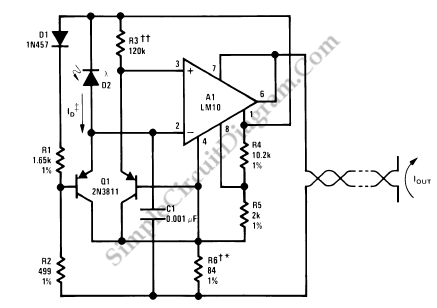Logarithmic Light (Photodiode) Sensor Signal Conditioner
There are many measurement system that would be more suitable if we use logarithmic scale, especially when we try to mimics human sensory response. Most physical phenomenon that sensible to human’s biological sensor system is wide range in nature. Human perception system is gifted with right method to scale very wide measurement range: logarithmic. We perceive unit based on significance of changes, for example, we would see almost no difference between two person having 180 cm and 180.5 cm in their height, but we would definitely see a big difference between 1 mm and 2 mm of needle holes. In this case, 1 mm difference is easier to see than 5 mm difference. Back to electronics, using logarithmic scale, we can easily cover very wide light intensity range. Here is the schematic diagram of the circuit:

With this logarithmic converter circuit, a four decades range light intensity variation is compressed to be sent through a standard transmission range. R3 value is chosen to balance the photodiode at the mid of measurement range, so the current through R3 should be equal to the photodiode current at that point. R6 is employed to compensate the effect of temperature drift that affect the logarithmic conversion slope. With the help of C1, a large area photodiode that has large capacitance won’t cause frequency instability. [Circuit’s schematic diagram source: National Semiconductor Application Note]